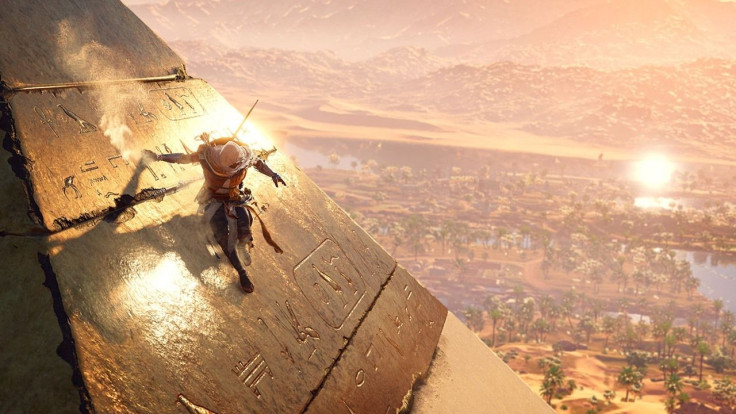Pyramid Of Giza Void Built Into 'Assassin's Creed: Origins' Before Discovery

A 30-meter hidden chamber was discovered buried deep within the Great Pyramid of Khufu by a team of scientists.
The discovery published on Nov. 2 in journal Nature has drawn massive attention in the past couple of days, and has taken archeologists and historians across the world by surprise.
However, for fans of popular game franchise "Assassins Creed" it was old news.
The game, which was released on Oct. 27 before the discovery was made, already had the void included as part of an in-game quest to explore Egypt's Great Pyramid of Giza.
The discovery is the first significant one made about the ancient tombs since the 19th century. It was made using cosmic ray imaging, which uses the behavior of subatomic particles muons that can penetrate deep into rocks just like X-rays. This was used to study the interior of the pyramid where the void was spotted.
"We have a void, we have a cavity, and it's huge, which means possibly intentional and certainly worthy of further exploration," said Harvard University Egyptologist Peter Der Manuelian in a NPR report on their website.
But, this void was already built into the critically and commercially successful game series’ magnum opus "Assassins Creed: Origins."
The question arises, how did the makers of the game do it?
When the doscovery was announced, fans of the game took to Twitter to let the makers know about the void. The news was casually brushed aside by the team, who had already built it in their game.
They seemingly "predicted" the presence of this void before scientists by following a disputed theory by French architect Jean-Pierre Houdin about how the entire pyramid was built.

According to a report by Kotaku, "Assassin's Creed: Origins" historian Maxime Durand said, "We have long believed that Jean-Pierre Houdin's theories about the inner ramps and royal circuit with two antechambers inside the Great Pyramid are probably the most credible, which is why we decided to use them in the game. We were betting on the fact that these secret locations inside of the Great Pyramid would probably be discovered in the near future, so we wanted to allow players the chance to visit them in advance."
The hidden chambers, which in the game are located above the pyramid's "grand hallway," is very close to where the new void was discovered.
The game goes further than the recent discovery by including an extensive internal rampway spiraling through the internal perimeters of the pyramid. This also mirrors the model proposed by Houdin closely. The discovery of the void now adds weight to Houdin's disputed model on how the pyramid was constructed.
According to his 2007 theory, “A long and straight ramp was used to build the first 129 feet of the pyramid, but an internal ramp was used to complete construction.” But widely accepted theories say that “the builders on the Giza plateau hoisted the pyramid's heavy stone blocks using an external ramp,” according to the Kotaku report.
According to the report, the team from Ubisoft responsible for designing the game, maintain close ties to Egyptologists like Houdin. "We were betting on the fact that these secret locations inside of the Great Pyramid would probably be discovered in the near future, so we wanted to allow players the chance to visit them in advance," Durand said.
The pyramid is one of the locations of one of its tomb quests, which are short, maze-like hunts for ancient stones. To get to the stone, they will have to step into Houdin's theorised antechambers and also enter the newly discovered void.
The Great Pyramid was built by the pharaoh Khufu who belonged to the fourth dynasty of the old kingdom and ruled from 2509 to 2483 BC. He succeeded King Sneferu. One of the major tourist attractions in the world, the monument measures 140 meters in height and is located on the Giza Plateau.
© Copyright IBTimes 2024. All rights reserved.




















